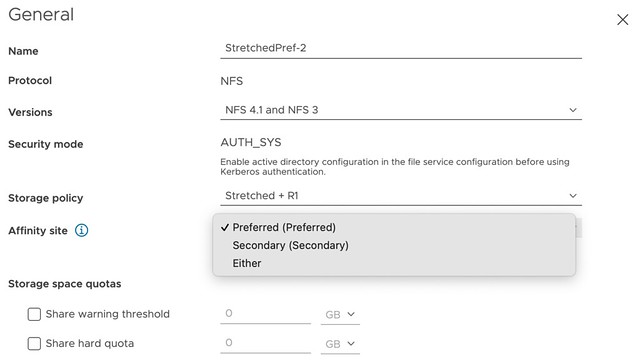As most of you probably know, vSAN File Services is not supported on a stretched cluster with vSAN 7.0 or 7.0U1. However, starting with vSAN 7.0 U2 we now fully support the use of vSAN File Services on a stretched cluster configuration! Why is that?
In 7.0 U2, you now have the ability to specify during configuration of vSAN File Services to which site certain IP addresses belong. In other words, you can specify the “site affinity” of your File Service services. This is shown in the screenshot below. Now I do want to note, this is a soft affinity rule. Meaning that if hosts, or VMs, fail on which these file services containers are running it could be that the container is restarted in the opposite location. Again, a soft rule, not a hard rule!

Of course, that is not the end of the story. You also need to be able to specify for each share with which location they have affinity. Again, you can do this during configuration (or edit it afterward if desired), and this basically then sets the affinity for the file share to a location. Or said differently, it will ensure that when you connect to file share, one of the file servers in the specified site will be used. Again, this is a soft rule, meaning that if none of the file servers are available on that site, you will still be able to use vSAN File Services, just not with the optimized data path you defined.

Hopefully, that gives a quick overview of how you can use vSAN File Services in combination with a vSAN Stretched Cluster. I created a video to demonstrate these new capabilities, you can watch it below.